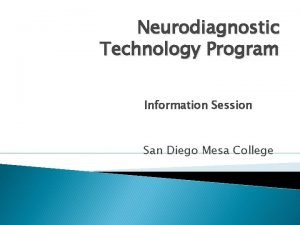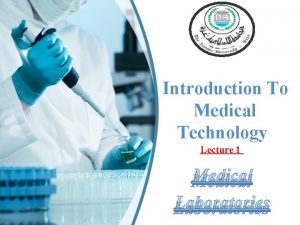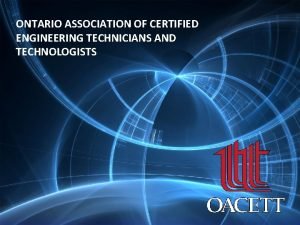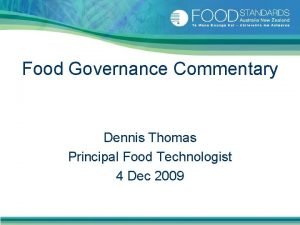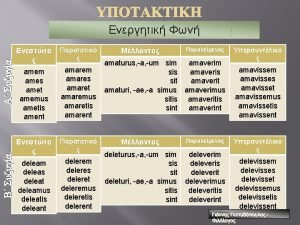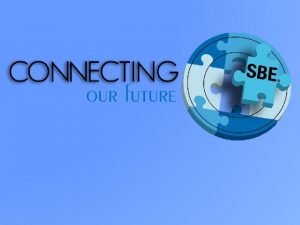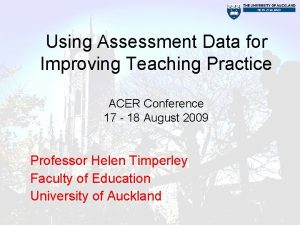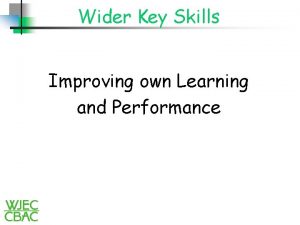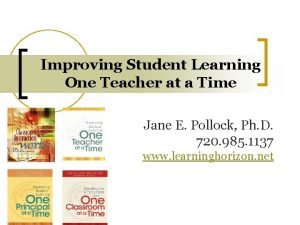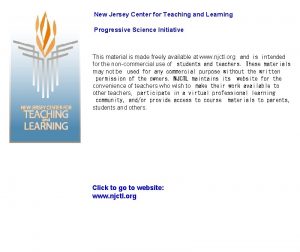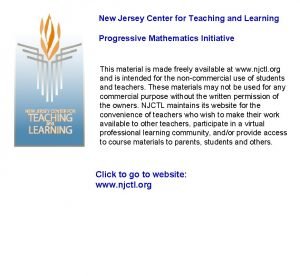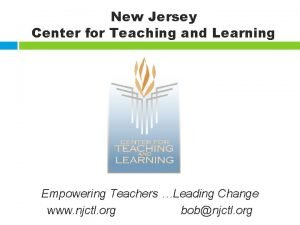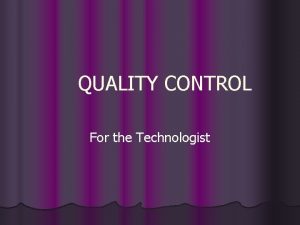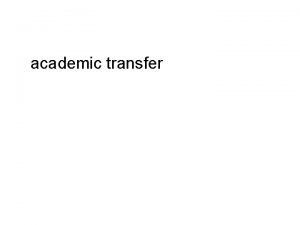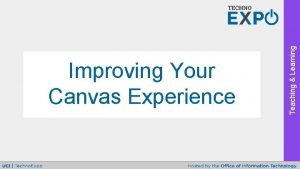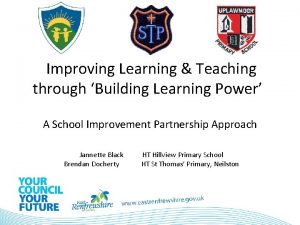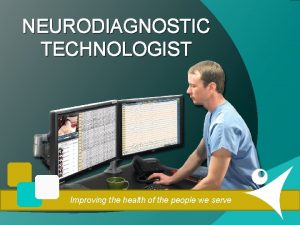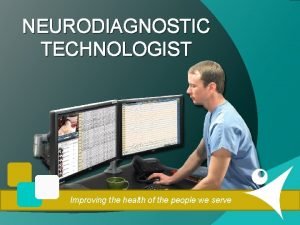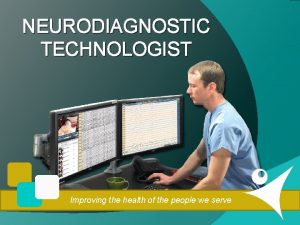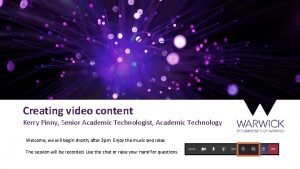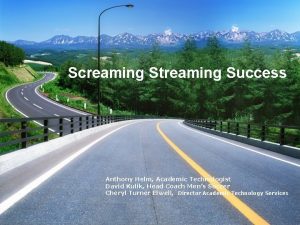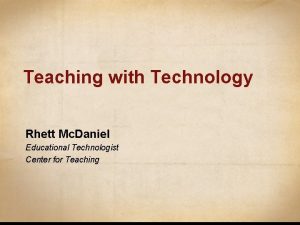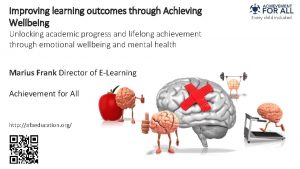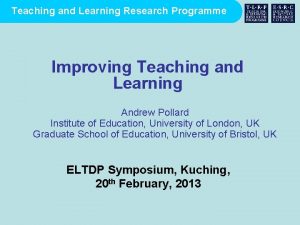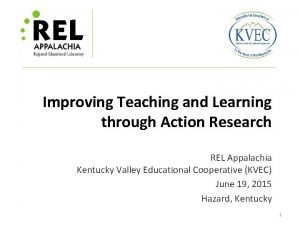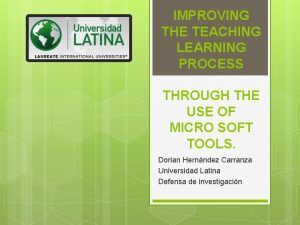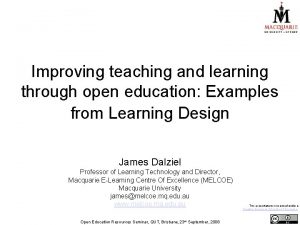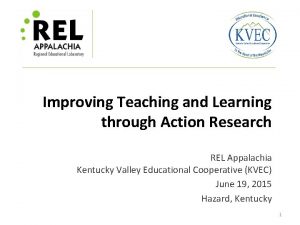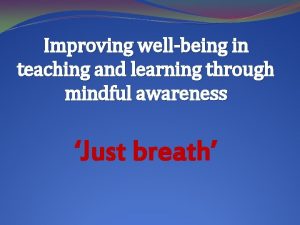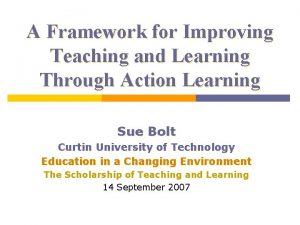Improving Teaching Learning Through a New Academic Technologist




















- Slides: 20

Improving Teaching & Learning Through a New Academic Technologist Role Cindy Jennings, Associate Professor and Director of Instructional Technology & Jeanne Skul, Vice Chancellor for Information Technology © Cindy Jennings & Jeanne Skul, (2008). This work is the intellectual property of the authors. Permission is granted for this material to be shared for non-commercial, educational purposes, provided that this copyright statement appears on the reproduced materials and notice is given that the copying is by permission of the author. To disseminate otherwise or to republish requires written permission from the author.

Your interest in the topic? • How many of you are “new” in an instructional or academic technologist role? • How many are contemplating adding a new instructional technologist or academic technologist position/person or have done so recently? • Why?

About USC Upstate • A co-educational, public, comprehensive metropolitan institution founded in 1967 • Bachelor’s degree programs in liberal arts, sciences, business administration, nursing, and teacher education & master’s degrees in education • 4900 students with 18: 1 student/faculty ratio • Average class size of 30 • 220 full-time teaching faculty/377 individuals teach courses

Our Technology Environment

Vision for the role/Position Creation • New branch in the IT profession • Strategic leadership for academic technology • Is academic support referenced in your IT mission?

Organizational Location “The rank and visibility of the position give clear indicators to the academic community of the relative importance given to instructional technology in the institutions' value system. ” (Albright & Nworie, 2008)

Filling the Position • Not an easy task! – Requirements • Walk on water • Leadership and management skills, knowledge and experience in instructional technology, ability to manage change, advanced/terminal degree • Must have credentials, expertise and experience to gain the respect of the faculty in order to work as a change agent

“Positives” of the internal hire • • Already know some of the minefields Have established relationships/inroads with faculty Know “how things work here/Know the system” History of involvement with IT advisory groups & have seen our technology infrastructure grow overtime – as well as many years of teaching experience.

“Negatives” of the internal hire… • Some people have had trouble seeing me in a new role…. . “What are you doing now”? • Last period of service was in administration & compliance…not viewed as a plus by all! • “What makes you qualified to do this”?

Equipping the Focus on Academic Technology • Structuring the Position Description beforehand • Early attention to mission and purpose of the area • Early ELI conference attendance! • Read, read, read…… • RSS is an indispensible tool!

Broad Goals – Framing the Work Trust-building Consciousness -raising Development opportunities Innovation incentives & support Focus on Teaching and Learning

Trust-Building - Establishing a presence…. • Advisory Board – allowed early involvement of faculty – the group met twice and helped to plan our spring conference • Web presence & blog for the department…. – …to serve as a communication channel – …to provide “virtual” development opportunities – …to serve as a primary information resource about teaching and learning with technology

Early Sustainable Initiatives • Digital Dialogues Series • Monthly hour long late-afternoon sessions – same time, 4 th Wednesday • Campus pubs to market – weekly e-newsletter and reminder email invitation • Sent preliminary information about each topic as a “tease” (see EDUCAUSE ELI “ 7 Things you Should Know About…”) • Included guests/media/examples during sessions – each session was a little different • Sessions open to faculty and students • Topics: • Wikipedia • Social Networking uses in courses • Digital Natives

Early Sustainable Initiatives • Emerging Media & Technology Fair • “Micro conference” of “mini sessions” involved minimal time commitment • Involved some members of Advisory Group & other “local experts” (from on campus & 1 guest) • 15 sessions…Topics included: • • • Effective Hybrid Course Design Google jockeying Back-channeling Web 2. 0 Introduction Digital Natives Introduction

Other Spring Semester Initiatives • Preliminary Needs Assessment – Student survey pilot/Faculty survey to follow in fall • Meet needs as they arise : – Grant consultation – Faculty TLT research support • Laptop initiative • “Viral” Development Opportunities aka viral professional development, Jennifer Jones) – • Maximal individual contacts • Book circle

Future Directions/ What Next? • Continue the Digital Dialogues series • Continue with a micro-conference each semester • Strengthen & market the web presence – build virtual teaching/learning lab – Ex: Short papers similar to “ 7 Things…. . ” on various topics • • Market the blog “Portable Programs” & “Single-focus workshops” “Coffee by IT” Extend an “Invitation” to use Instructional Technology Services

Innovation Incentives • Say thank you when people work with you/help you or just get involved • Tablet Incentive Grant • Software Purchase Incentives • Conference Scholarships – ex: to ELI!

Lessons Learned • • Adjust expectations – attendance at events, etc. Celebrate even small victories. Early successes might not be readily apparent. May need to look internally for a “good fit” hire. • Don’t let this person get sucked into the course management administrator or technical trainer role.

Your Ideas/Takeaways? *See the wiki from yesterday’s “Creating a More Net-Savvy Campus Culture” at EDUCAUSE Connect/SERC 08 Conference Proceedings for ideas like “Speed-Geeking”

Additional Resources • Albright, M. J. , & Nworie, J. (Number 1 2008). Rethinking Academic Technology Leadership in an Era of Change. EDUCAUSE QUARTERLY , 15 -23. • NMC White Paper, (2006). Maximizing Campus Impact: Lessons from the Trenches. New Media Consortium, 1 -23. • Deblois, P. B. (2005). Leadership in Instructional Technology and Design: An Interview, EDUCAUSE QUARTERLY, 12 – 17.
 Asetlink
Asetlink Venipuncture radiologic technologist
Venipuncture radiologic technologist Role of medical technologist
Role of medical technologist Oacett certification
Oacett certification Dennis food technologist
Dennis food technologist Chief technologist
Chief technologist Cbne certification
Cbne certification Using assessment data for improving teaching practice
Using assessment data for improving teaching practice Improving own learning and performance examples
Improving own learning and performance examples Improving student learning one teacher at a time
Improving student learning one teacher at a time Improving student learning one teacher at a time
Improving student learning one teacher at a time New jersey center for teaching and learning
New jersey center for teaching and learning How many total squares are there
How many total squares are there Www.njctl.org answer key
Www.njctl.org answer key Cuadro comparativo e-learning y b-learning
Cuadro comparativo e-learning y b-learning Ole slp
Ole slp New academic structure
New academic structure Definitions of microteaching
Definitions of microteaching Alicia burdess teaching through problem solving
Alicia burdess teaching through problem solving Through one man sin entered the world, and through one man
Through one man sin entered the world, and through one man Classes of furcation
Classes of furcation
